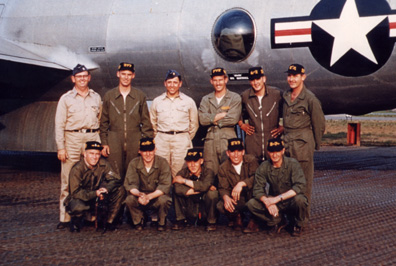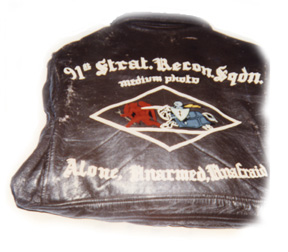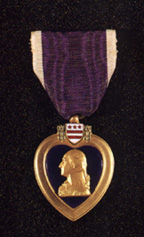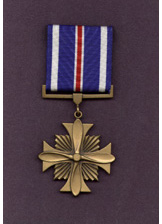Home - Contact Us - Cold War Hist. - 91st SRS Hist. - Stardust 40 Mission Story
RB-29 Crew Hist. - Hiking Rural Japan - Extended Stories - Short Stories
Biographical Notes - Current Commentary - Art Gallery - Fun Stuff - Education
Programs - Locator- Reunions - Memorials - Cold War Museum Web Site
|
Recollections of an RB-29 crew in Japan
Selected RB-29 Cold War Excerpts
relating to the
Mysteries of the Cold War RB-29 Flight # 4461810
|
Over the years, family members of this RB-29 crew, shot down in the Sea of Japan, June 13, 1952, have formed a coalition to search out details relating to the loss of this aircraft and crew. They have offered the story of their search for inclusion on this web site as a memorial to their lost loved ones and a plea for further information from any knowledgeable source that may throw additional light on the subject.
Credits for this information go to Charlotte Busch Mitnik, Roland Robitaille, Gordon Berg and Pat Service.
|
During the Cold War they were to have been “Weather Gathering” or “Training Flights.” But the “Ferret flights” as they were secretly called were probing the Soviet Union's defenses, their electronic communications, and their atomic testing. Information that was gathered then could probably be picked up by some microchip in a satellite today. Of course, if questioned, some in government would still deny this fact. Archive papers, and the men who survived these flights would tell a different story. Sheldon Goldberg, a historian at the Air Force History Support Office claims that "People are still tightlipped about these missions. "This is all shadowy stuff that has not fully come to light." The following story is about one of those planes that did not return —
On June 13, 1952 at 10:07 a.m. Major Sam Busch and his crew of 11 left Yokota Air Base, Honshu Japan. That would be the last time these men would ever be seen by a buddy or a family member.
According to official records, the RB-29 #44 61810 departed with the following crew on board (they were all from the 91st Strategic Reconnaissance Squadron):
|

|
| L to R, Front Row: Navigator, 1st Lt. Robert J. McDonnell — Right. Scanner, S/Sgt. Roscoe G. Becker — Tail Gunner, S/Sgt. Eddie R. Berg — Left. Scanner, Leon F. Bonura, Flight. Engineer — Master Sgt. William R. Homer
L to R, Back Row: Radar Operator, *Capt. Samuel D. Service — Pilot, 1st. Lt. James A. Sculley — Aircraft Commander, Major Samuel N. Busch — Radio Operator, S/Sgt. William A. Blizzard — Central Fire Control Gunner, S/Sgt. Miguel W. Monserrat — Camera Operator, A/1c Danny Pillsbury
T/Sgt. David L. Moore, not in photo, was included in the mission.
*Posthumously Promoted to Captain
The official records state that the aircraft was on a classified surveillance mission of shipping activity over the Sea of Japan. The plane was followed by radar over the course of the flight until 1320 hours at which time the radar contact was lost. The aircraft failed to return to Yokota Air Base and although several attempts were made to establish radio contact, no communications from the crew were received. The missing aircraft was known to have three six-man and 11 one-man life rafts on board and sufficient food and medical supplies to care for all 12 crew members for three days.
On June 14 1952, during the search, an empty six-man life raft was sighted, right side up, at a point about 100 miles off the Russian coast, but search planes were unable to salvage the raft due to prevailing conditions. An unconfirmed report indicated that a second six-man life raft was seen four miles south of the first raft, but this sighting could not be verified. The search continued until June 17, 1952 but no wreckage was found and no survivors were sighted. A message was received from the Commander, Far East Air Forces' indicating that an official report from Radio Moscow on June 16. 1952 stated that one officer survivor was picked up by a Russian vessel about two days before. The name of the survivor was not given and efforts to confirm the report were unsuccessful. Later the Commander of the Far East Air Force, reported that the cited broadcast did not pertain to this incident.
This downing was considered an "Air Accident" according to official records. The crew members were continued in a missing status until November 14, 1955 when their status was "administratively" changed by the Department of the Air Force to “deceased by presumptive finding of death.” That should be the end to this story, but it is not.
Throughout the years there have been many rumors about the crew of this RB 29. In the spring of 1953 a Japanese prisoner repatriated from a labor camp in Khabarovsk speaks of 12 or 13 U.S, airmen who were held with him. Rumors of an officer from a B-29 being seen in a Soviet hospital in Magadan. Members of a flight that were shot down in July of 1952 were interrogated by the Chinese about Major Busch. Why, if he were dead and at the bottom of the sea, would they want to know about him? Our government, knowing of these rumors, sent a demarshe (Webster: A move or countermove in diplomatic relations) to the then Soviet Union in 1956, only to have them deny that these men or any Americans were ever taken captive.
For more than forty years, family members had worried about their loved ones, wondered if they were alive, if they were well, or if they were ever coming home. Time after time the families of the crew, some who were unknown to each other, asked the government to help them with their search for the truth. All that they received were half truths and misinformation. Some family members accepted what was told to them. Others could not accept the official story because it just didn't sound right. It seemed that pieces of the story were missing. Literally a lifetime had been spent searching for closure by some family members, some duplicating the works of others.
A Congressional Investigation by Senator Schweiker of Pennsylvania in 1975 revealed nothing, FOIAs were denied, threats made to family members "not to make waves," something may happen to the men if they were alive. All family members were headed towards the same direction, the truth, but they always hit the same brick wall.
Until June 1992, almost 40 years to the day, when Russian President Boris Yelsin revealed to the Americans that the Soviets had taken dozens of U.S. servicemen captive during the Cold War, and some may still be alive. This revelation was not only a shock to our government. It was a shock to all Korea/Cold War families who had a loved one missing.
Documents released by the Russians to the Department of State included a copy of a June 13,1952 top secret memo to Joseph Stalin reporting that an American B-29 bomber was shot down in flames at 5:35 PM, 18 miles from the Russian shoreline.
|
| These documents, along with the previous rumors, gave the family of this crew hope for closure. The Russians continued, and still do to this day, to claim that the plane went into the Sea in flames. Their story may have been accepted except for the fact that in 1993 Mr. Roland Robitaille of Kansas had a story to tell of his own.
While attending the Veterans of Foreign Wars Convention in Dallas, in late August of 1993, as a member of Foreign Affairs and National Security Committee, Roland Robitaille had the opportunity to talk to Mr. Ed Ross. Mr. Ross was then Acting Deputy Assistant Secretary of Defense for POW/MIA Affairs.
|

A-2 flight jacket worn by Maj. Sam Busch,
reported to be the only item recovered from the
shoot down crash site. Photo Ctsy. Earl Myers
|
General Needham and Mr. Ross both talked about POW/MIA updates to the Committee. Mr. Ross got Roland’s attention when he mentioned a downed RB 29 in June of 1952. At that time, Robitaille told Lewis Cooper, the State VFW Jr. Vice Commander, that he knew something about the incident. Cooper urged him to go forward and tell Ross what he knew. Roland met with Ed Ross at the door and told him that he had information on the downed RB-29 of June 13th 1932. Ross and Robitaille then walked down the hallway to get away from the crowd and noise. Ross asked many questions of the former tail gunner of Capt. Eugene Hassing’s B-29 crew.
Roland’s story will follow on the next page.
|
694th Intelligence Group, Fort Mead, Maryland
Marking an end to more than 40 years of unanswered questions and unrecognized heroism, the 694th Intelligence Group hosted a solumn ceremony, Oct. 21, 1995, to honor this crew. Families of the 12 crew members accepted posthumous decorations in recognition of their loved ones’ outstanding heroism and selfless devotion to duty in the defense of the United States.
|
 
|
|
Left: Purple Heart — Right Distinguished Flying Cross
|
This RB-29 was not the first, nor the last U.S. aircraft shot down during the Cold War. From 1950 to 1970, more than 30 aircraft were lost due to hostile actions.
PREVIOUS — CONTENTS PAGE — NEXT
|
Home - Contact Us - Cold War Hist. - 91st SRS Hist. - Stardust 40 Mission Story
RB-29 Crew Hist. - Hiking Rural Japan - Extended Stories - Short Stories
Biographical Notes - Current Commentary - Art Gallery - Fun Stuff - Education
Programs - Locator- Reunions - Memorials - Cold War Museum Web Site
|
|
|